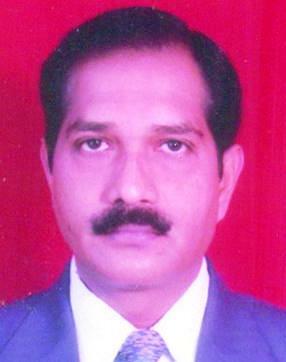
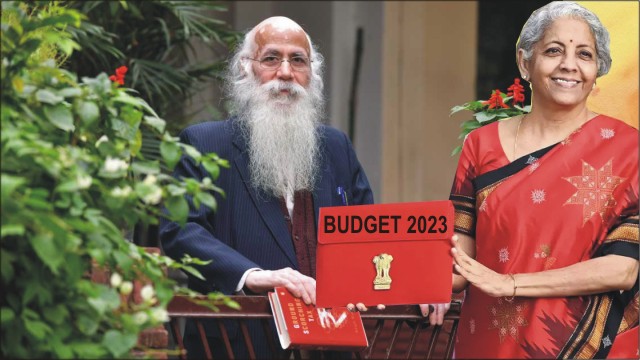
PROFESSOR ARUN KUMAR is a researcher, author and former professor of economics at the Centre for Economic Studies and Planning, Jawaharlal Nehru University. He has authored books like: “The Black Economy in India” (2002) and “Understanding Black Economy and Black Money” (2017). “`Indian Economy’s Greatest Crisis: Impact of the Coronavirus and the Road Ahead’. 2020, “Ground Scorching Tax’, ‘Demonetization and Black Economy’. Mohd Naushad Khan asked his views on Union Budget 2023-24. Here are excerpts from an interview:
What’s your take on the budget and is it on expected lines?
This budget continues the strategy the government has been adopting of `supply side’ policies. It does not mean increasing supply but granting concessions to businesses. This budget also continues this pro-business attitude. How to understand it when the government is saying that it is giving to every section of society be it farmers, MSME, women, children, elderly and so on?
Part A of the budget speech lists what is being given to every section. So, the facade is that every section is getting something and this makes the budget look reasonable and caring. But we have to go behind this façade and understand the reality.
We have to see the priority given to each sector and that is indicated by how much allocation is made for each item. Even after allocation is given we have to see whether or not that money is spent during the year. The revised estimate tells us whether that money was spent or not. To make the budget look impressive, announcement is made of increased allocation by 10, 20 or even more but it may not be spent and that is why in the revised estimates the money spent on some key items comes down and that tells us what the government’s priority is.
More importantly, if the fiscal deficit rises to keep it in control, what are the items that are curtailed and that again tells us the priority. In the budget we can see that money spent for those items and heads which are of interest to big business have been increased, while those items which are of interest to the marginalised sections have been cut.
So, we don’t need only to look at the allotments we also need to look at the revised estimates. On education and health, rural development, MNREGA there have been cuts and those are the items that are required for employment generation which is the biggest problem today. Because of inadequate employment generation, the income of the poor is not rising and that is why demand is short and therefore the rate growth of the economy is low.
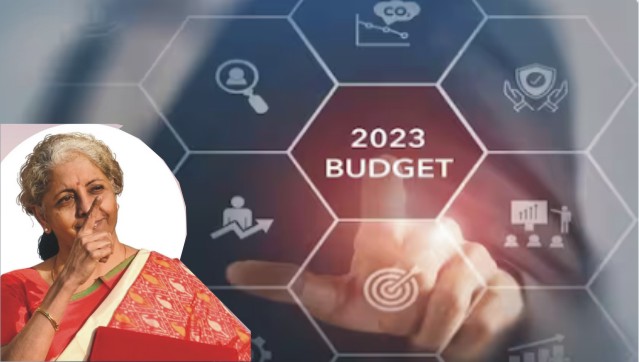
Even though the government keeps saying that India is one of the fastest growing economy among the large economies, actually the Indian economy has been declining as a result of decline in the unorganized sectors.
The official data is based largely on the organized sector data and does not look at the unorganized sector independently. If the data of unorganized sectors also we can be incorporated, the economy would be seen to be declining and not growing at 7 percent. That is the big problem, when the economy is in decline, employment generation will be inadequate.
The government says that UN, IMF are also supporting us and saying that the rate of growth is 6 or 7 percent. But, these agencies are not data gathering which independently gather data and therefore, they take the government data and add or subtract 0.5 percent here and there. That is why their prediction is close to the government growth numbers. All the mistakes in the government data are also reflected in their analysis.
There has been a 33 percent increase in capital expenditure. Will it in anyway help to generate growth and revive the economy as well?
When we think about growth, the first thing is to check whether the budget expenditure as a share of GDP is increasing or not. If it increases, it will give a push but not if it decreases. The total expenditure is to increase by 7 percent whereas the nominal GDP is projected to increase 10.5 percent. Hence, the push will not come from the aggregate expenditure.
Second, the government pumps demand in the economy through the primacy deficit which is projected to fall. So, government will pump less demand in 2023-24 than in 2022-23. Third, capital investment is supposed to rise dramatically but where is it rising? In capital intensive areas like, railways, highways and power. These are in the organized sectors and capital intensive so will generate few jobs.
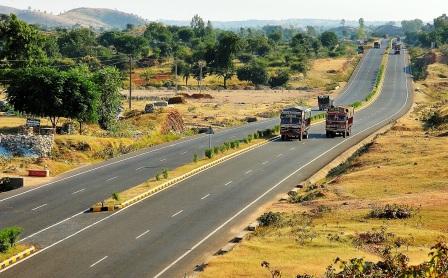 Earlier, if a road was being constructed one could see hundreds of workers whereas now there are hardly 10 people working with big bulldozers and cranes. These projects will generate little direct employment. What is needed is to prioritize smaller projects in the rural and urban areas rather than big ones.
Earlier, if a road was being constructed one could see hundreds of workers whereas now there are hardly 10 people working with big bulldozers and cranes. These projects will generate little direct employment. What is needed is to prioritize smaller projects in the rural and urban areas rather than big ones.
Big projects are what the big companies try to get. So, taking up big construction projects serves their interest. It will push demand for items like steel and cement. But its multiplier will be less than that for say, rural employment generation schemes, like, MGNREGS. But, it is proposed to cut back expenditures on MGNREGS, rural development schemes, education and health. Simply allocating more for capital expenditure does not mean that it is going to create more employment.
Many experts are saying that with CAPEX increase, the budget has hit the headlines but it is likely to miss the goals of inclusive development? Your response?
If you are increasing CAPEX by cutting back on education, health and rural development etc. then naturally it is not inclusive. Those segments who need more employment will not get it. Only the organized sector and the big corporates will get benefit out of that increase. What this also illustrates is that the government wants to push for the organized sector while letting the unorganized sector decline.
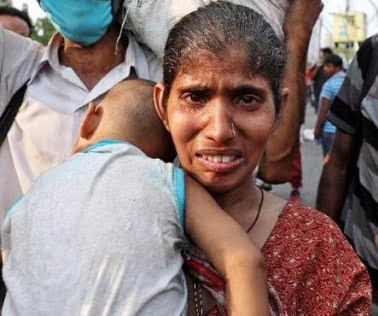 This is the political strategy being adopted so that the poor will become permanently dependent for getting food, gas and so on and the ruling party will take political advantage out of it. They are serving twin purposes. Politically they can oblige large number of people by saying look we are giving this or that. And, behind this façade, they can serve the interest of big corporates and rich people by giving them concessions so that their profit increases. This seems to be the strategy of the government?
This is the political strategy being adopted so that the poor will become permanently dependent for getting food, gas and so on and the ruling party will take political advantage out of it. They are serving twin purposes. Politically they can oblige large number of people by saying look we are giving this or that. And, behind this façade, they can serve the interest of big corporates and rich people by giving them concessions so that their profit increases. This seems to be the strategy of the government?
Tax slab has been revised. Will it in any way help the middle class?
We have to define what is middle class? In India the middle class is small. If you go by the socio-economic survey of Delhi of 2018 which is pre-pandemic then 98 percent of Delhi families were spending less than Rs 50,000 per month which means they don’t even come in the tax bracket. In India, basically the middle and upper classes are around 5 percent. The per capita income of Delhi was three times the national average then.
If we take that into account, at all-India level, 98 percent would have spent less than Rs 20,000 per month which is 2. 4 lakh rupees per annum and they don’t come in the tax net. The benefit for the middle-class may be 2 or 3 percent or maximum 4 percent. The real benefit of this revised tax slab will go to the well-off sections, who earn more than Rs.15,00,000 per annum.
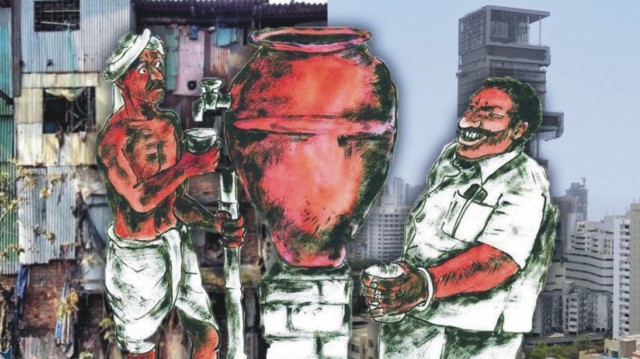 If one thinks about increase in expenditure by the tax payers, the total benefit is expected to be Rs. 35,000 crores. Of the total consumption in the economy of Rs.180 lakh crore this may not be even 0.2 percent. So how much stimulus can that give? This is all hype basically.
If one thinks about increase in expenditure by the tax payers, the total benefit is expected to be Rs. 35,000 crores. Of the total consumption in the economy of Rs.180 lakh crore this may not be even 0.2 percent. So how much stimulus can that give? This is all hype basically.
Middle class and poor are affected by indirect taxes thorough their consumption. We know about 8 crore people file return of which 4 crores will file nil return and pay no tax. And another 2.5 crore paying hardly any tax or very little tax. Only 1.5 crore people pay effective tax and those are the well of sections.
Also Read – Adani Bubble: A Researched Prick
It will further boost the income of the well-off section. The well-off sections doesn’t need any concession because the whole economy has moved in their direction. Organized sector is doing well and their incomes are rising so they don’t need tax concessions. Not only their income is going up because stock market went up and their wealth also increased and they benefit from wealth effect. They have both higher income and wealth and therefore they will any way be spending more. This tax concession idea is not meant for the vulnerable and weaker sections.
It is being argued that budget has not taken care of informal sector. What do you think is required to be done to revive the economy?
Unorganized sector consists largely of agriculture and unorganized sector in non-agriculture. To revive the unorganized sector, higher incomes in agriculture and micro-sector are required. The micro sector was adversely affected by demonetization, GST, NBFC crisis, digitization of the economy and the lockdown since 2016.
What needs to be done is to revive the micro sector by reforming GST which can be done by making it a last point tax. The organized sector gets the benefit of the input credit but not the micro sector. Making GST a last point tax eliminates the input credit and the disadvantage suffered by the micro sector.
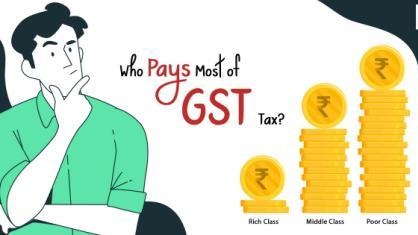
Further, indirect taxes have to be reduced to reduce the burden on the poor people and the middle classes who pay more indirect taxes than direct taxes. Cut in the excise duty on Petrol and diesel will lower prices and increase the purchasing power of the people.
To revive the micro sector, cooperatives of micro sector units can be formed. The budget has announced this but it remains to be seen how much of it would be implemented? Further, the micro sector needs to be separated from MSME because whatever concession is announced for MSME the medium sector takes the benefit and the micro units get left out.
Also Read: Wealth inequality: India’s poorest 50% pay almost two-third of the GST
Next, the incomes of the farmers need a boost and to do that we have to announce MSP for all crops. How to implement that will be an issue. If workers are given a living wage as promised in the Constitution demand will rise and the prices of agricultural commodities will rise. As per an earlier survey an average farmer earns Rs 27 per day which is below the poverty line. So, we also need to create non-farming employment which will require the micro sector to be boosted
Has the budget taken care of internal and external challenges?
No, that is what I am saying. Employment is the biggest challenge. If employment is taken care of then income is generated, the purchasing power goes up and therefore demand in the economy will rise. But if you are not taking care of employment by catering to the interest of the organized sector only where employment generation is very weak then the problem will persist.
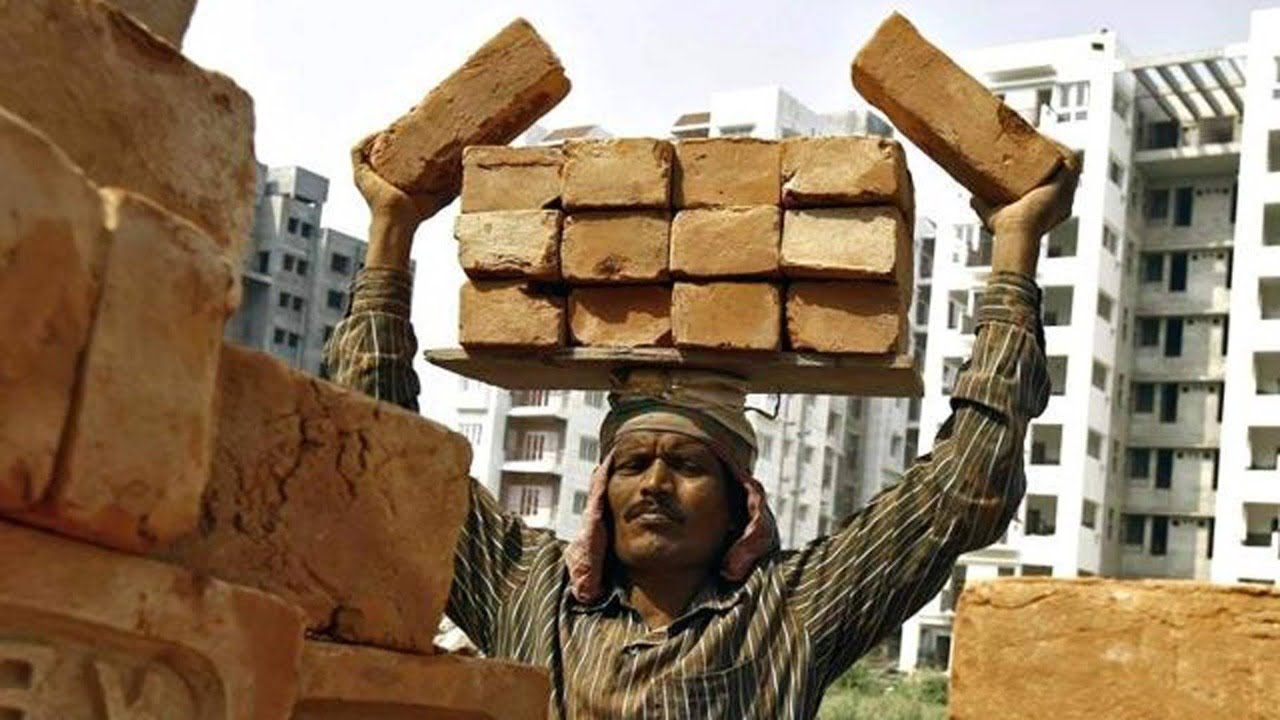 It is the unorganized sector which needs to be boosted so that income generation is stepped up for the large number of people and then demand would rise. The budget needed to do that. Instead of doing that, the budget is catering to the interest of organized sectors. The strategy is to let farming and non-farming micro sectors languish so that poverty persists. Then political benefit can be derived by giving small sops to the poor from time to time. In brief, much noise has been made but the budget does not have much for the unorganized sectors.
It is the unorganized sector which needs to be boosted so that income generation is stepped up for the large number of people and then demand would rise. The budget needed to do that. Instead of doing that, the budget is catering to the interest of organized sectors. The strategy is to let farming and non-farming micro sectors languish so that poverty persists. Then political benefit can be derived by giving small sops to the poor from time to time. In brief, much noise has been made but the budget does not have much for the unorganized sectors.
There is so much talk about public investment but the private investment is not catching up as desired?
Private investment will only come when demand is adequate. Capacity utilization according to RBI is hovering around 72. Now that’s not the level at which investment demand will increase. Some sectors may have more investment because they are expanding and there is demand, etc., like, IT.
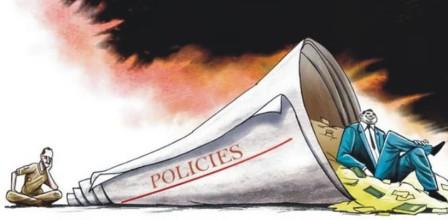
But, even IT sector, digitized sector even they have declined recently and laid off workers. They had over investment during the pandemic and over employment so now they are cutting back. The point is one cannot only depend on the organized sector which is capital intensive and does not generate much employment. So, there is no option but to go to the unorganized sector to generate more employment.
The government appeared to have tried to connect with the vulnerable sections but at the same time has reduced allocation for the social schemes. Your response?
How much is allotted for schemes shows the priority of the government. For rural development directly, there is only 5 percent of the budget whereas they constitute about 70 percent of the population and it shows that the priority for rural development is low. The priority is more for the big business and the organized sectors.
The capital expenditure increase is largely going for the schemes in the organized sectors. Priority is reflected by allocations and then whether they are fulfilling those allocations or not. In Power sector more was spent than what was allotted and for education less was spent than what was allocated.
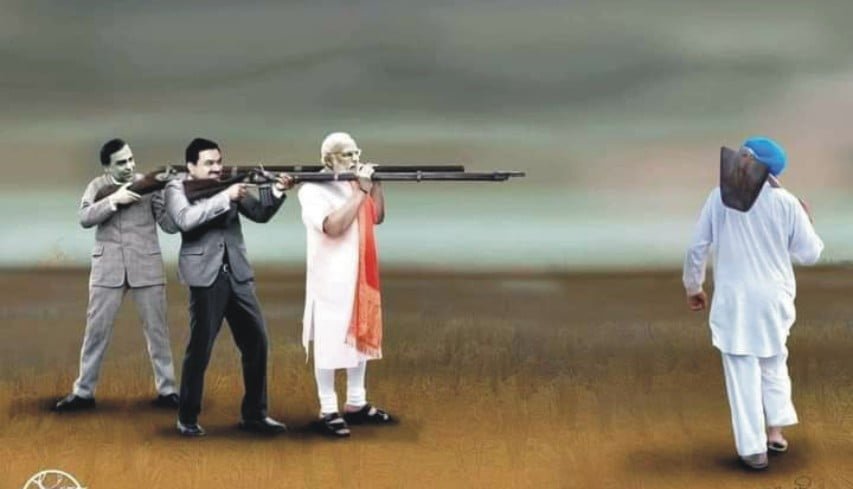 To keep the fiscal deficit down they have cut back what is essential for the poor people while increasing allocations to items that are of interest to big business. The priority of this government is very clear that is to make the organized sector bigger and within that certain big business houses, like, Adani, Ambani and TATAs.
To keep the fiscal deficit down they have cut back what is essential for the poor people while increasing allocations to items that are of interest to big business. The priority of this government is very clear that is to make the organized sector bigger and within that certain big business houses, like, Adani, Ambani and TATAs.
The idea is to follow the South Korean chaebols. These conglomerates are into everything and not focused into one area. Adanis are into ports, airports, power, roads, etc. Ambanis are into Telecom, Petrochemicals, Retailing and so on and TATAS are also into all kinds of things. The idea is to create these chaebols.
Also Read: How LIC is robbing the illiterate Indian Blind?
On the one hand, they are creating huge entities and on the other hand, keeping the poor, poor so that they become politically dependent to the doles the government may give them. Now we are seeing the failure of this strategy with demand not expanding in the economy and therefore the rate of the growth of the economy has slowed down. Even before the pandemic the rate of the growth has come down from 8 percent to 3.1 percent over 8 quarters. That trend is continuing.
 After a crisis like the pandemic, one should not compare growth rates but look at the level of GDP. In Q2 2023, we are only 8 percent above the 2019-20 GDP. That means in three years growth has been 8 percent which means an annual growth rate of 2.8 percent. And, there is an external challenge due to the War in Ukraine. If the internal economy was strong then we could have met the external challenge easily.
After a crisis like the pandemic, one should not compare growth rates but look at the level of GDP. In Q2 2023, we are only 8 percent above the 2019-20 GDP. That means in three years growth has been 8 percent which means an annual growth rate of 2.8 percent. And, there is an external challenge due to the War in Ukraine. If the internal economy was strong then we could have met the external challenge easily.
We need a strategy to expand the demand in order to revive our economy. So rather than following ‘supply side’ policy we have to improve demand. Our fiscal deficit may be high but because private sector is not investing enough it is not being crowded out. If you invest more in the public sector then demand will go up and the private sector will also invest more. Mainstream economists and the bank economists argue that public sector investment crowds out private sector investment but that is true when there is full employment. But below full employment that is not true.
Also Read: Budget makes news with CAPEX increase but falls short of inclusive development objective
Creating deficit in the budget increases demand. It is time to increase the demand specially at the lower level. So, if fiscal deficit has to be expanded then people at the bottom level will have more employment. That is a desirable thing even from the public sector point of view. And that is why FICCI chairman head of the Hindustan Unilever has been saying for the last two years that we need to pump in purchasing power into the rural areas at the lower level. Industry itself recognizes that demand is short. Using fiscal deficit to generate more employment will bring more income at the lower level and is a better strategy than the current strategy. ![]()
___________
Also Read:
TRUTH VS FALSEHOOD: BBC – Who is afraid?
Mughal Gardens – Name Changed, But Why?
Industrialization versus Environmental Degradation
Punjab – How a deadly cocktail of Agri-Water-Energy nexus going to destroy it?
North Pole and the ideological conflict of RSS & Hindutva
Politics of Symbolism: Dalit Chief Ministers in India

Disclaimer : PunjabTodayTV.com and other platforms of the Punjab Today group strive to include views and opinions from across the entire spectrum, but by no means do we agree with everything we publish. Our efforts and editorial choices consistently underscore our authors’ right to the freedom of speech. However, it should be clear to all readers that individual authors are responsible for the information, ideas or opinions in their articles, and very often, these do not reflect the views of PunjabTodayTV.com or other platforms of the group. Punjab Today does not assume any responsibility or liability for the views of authors whose work appears here.
Punjab Today believes in serious, engaging, narrative journalism at a time when mainstream media houses seem to have given up on long-form writing and news television has blurred or altogether erased the lines between news and slapstick entertainment. We at Punjab Today believe that readers such as yourself appreciate cerebral journalism, and would like you to hold us against the best international industry standards. Brickbats are welcome even more than bouquets, though an occasional pat on the back is always encouraging. Good journalism can be a lifeline in these uncertain times worldwide. You can support us in myriad ways. To begin with, by spreading word about us and forwarding this reportage. Stay engaged.
— Team PT


Copyright © Punjab Today TV : All right Reserve 2016 - 2024 |